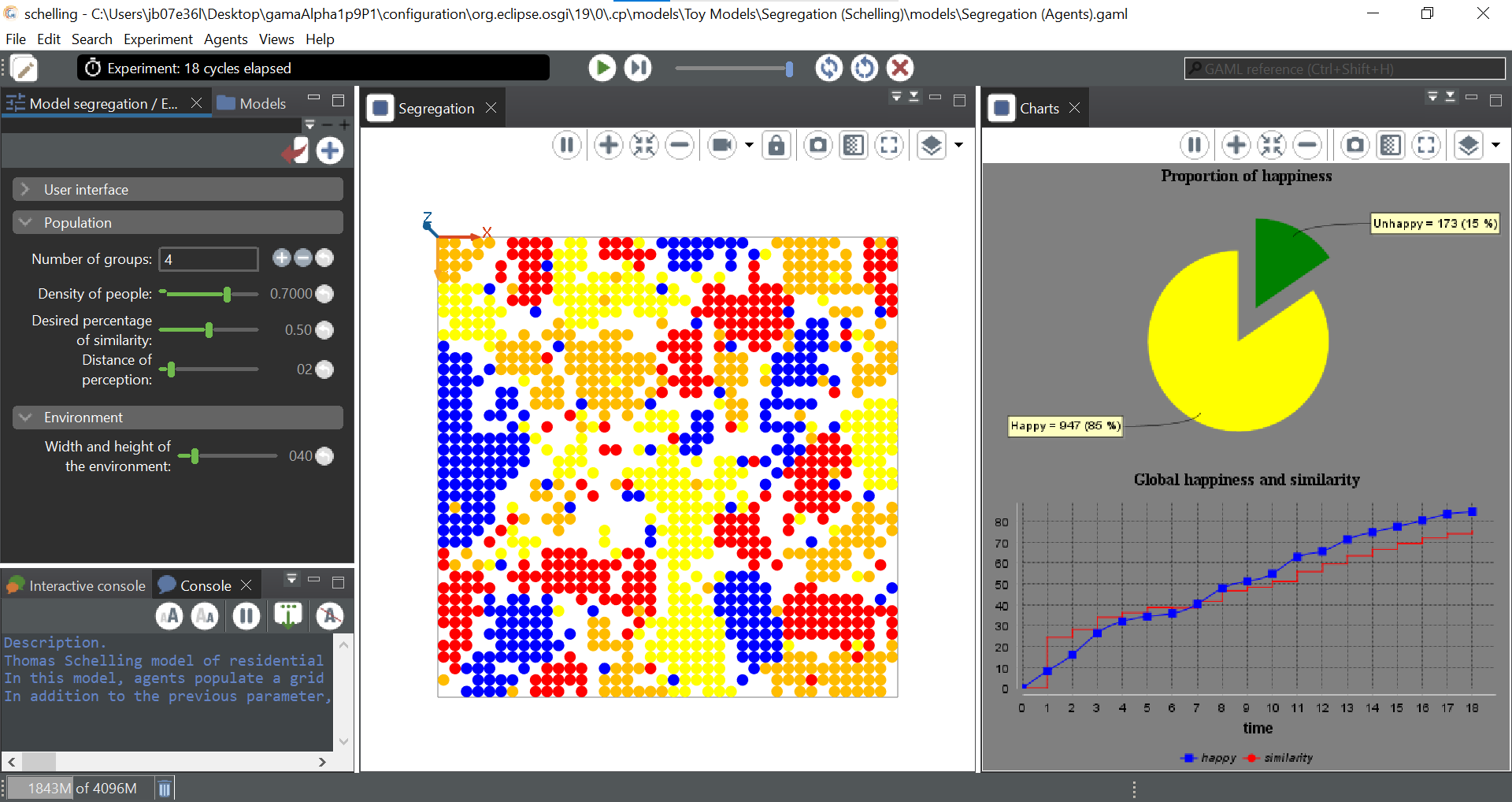-
Notifications
You must be signed in to change notification settings - Fork 99
ContinuousMove
Julius Bañgate edited this page Apr 15, 2023
·
7 revisions

Path: Library models/Toy Models/Evacuation/models/Continuous Move.gaml

[Annotation 2023-04-15 143112" src="https://user-images.githubusercontent.com/4437331/232223737-58ee9c1f-088e-49d3-b128-2a2287a512a4.png">
/**
* Name: continuous_move
* Author: Patrick Taillandier
* Description: A 3D model which show how to represent an evacuation system with
* obstacles, cohesion factor and velocity. The people are placed randomly and have
* to escape by going to a target point
* Tags: 3d, shapefile, gis, agent_movement, skill
*/
model continuous_move
global {
//Shapefile of the buildings
file building_shapefile <- file("../includes/building.shp");
//Shape of the environment
geometry shape <- envelope(building_shapefile);
int maximal_turn <- 90; //in degree
int cohesion_factor <- 10;
//Size of the people
float people_size <- 2.0;
//Space without buildings
geometry free_space;
//Number of people agent
int nb_people <- 500;
//Point to evacuate
point target_point <- {shape.width, 0};
init {
free_space <- copy(shape);
//Creation of the buildinds
create building from: building_shapefile {
//Creation of the free space by removing the shape of the different buildings existing
free_space <- free_space - (shape + people_size);
}
//Simplification of the free_space to remove sharp edges
free_space <- free_space simplification(1.0);
//Creation of the people agents
create people number: nb_people {
//People agents are placed randomly among the free space
location <- any_location_in(free_space);
target_loc <- target_point;
}
}
}
//Species which represent the building
species building {
//Height of the buildings
float height <- 3.0 + rnd(5);
aspect default {
draw shape color: #gray depth: height;
}
}
//Species people which move to the evacuation point using the skill moving
species people skills:[moving]{
//Target point to evacuate
point target_loc;
//Speed of the agent
float speed <- 0.5 + rnd(1000) / 1000;
//Velocity of the agent
point velocity <- {0,0};
//Direction of the agent taking in consideration the maximal turn an agent is able to make
float heading max: heading + maximal_turn min: heading - maximal_turn;
//Size of the agent
float size <- people_size;
rgb color <- rgb(rnd(255),rnd(255),rnd(255));
//Reflex to kill the agent when it has evacuated the area
reflex end when: location distance_to target_loc <= 2 * people_size{
write name + " is arrived";
do die;
}
//Reflex to compute the velocity of the agent considering the cohesion factor
reflex follow_goal {
velocity <- velocity + ((target_loc - location) / cohesion_factor);
}
//Reflex to apply separation when people are too close from each other
reflex separation {
point acc <- {0,0};
ask (people at_distance size) {
acc <- acc - (location - myself.location);
}
velocity <- velocity + acc;
}
//Reflex to avoid the different obstacles
reflex avoid {
point acc <- {0,0};
list<building> nearby_obstacles <- (building at_distance people_size);
loop obs over: nearby_obstacles {
acc <- acc - (obs.location - location);
}
velocity <- velocity + acc;
}
//Reflex to move the agent considering its location, target and velocity
reflex move {
point old_location <- copy(location);
do goto target: location + velocity ;
if not(self overlaps free_space ) {
location <- ((location closest_points_with free_space)[1]);
}
velocity <- location - old_location;
}
aspect default {
draw pyramid(size) color: color;
draw sphere(size/3) at: {location.x,location.y,size*0.75} color: color;
}
}
experiment main type: gui {
parameter "nb people" var: nb_people min: 1 max: 1000;
float minimum_cycle_duration <- 0.04;
output {
display map type: 3d {
species building refresh: false;
species people;
graphics "exit" refresh: false {
draw sphere(2 * people_size) at: target_point color: #green;
}
}
}
}
- Installation and Launching
- Workspace, Projects and Models
- Editing Models
- Running Experiments
- Running Headless
- Preferences
- Troubleshooting
- Introduction
- Manipulate basic Species
- Global Species
- Defining Advanced Species
- Defining GUI Experiment
- Exploring Models
- Optimizing Model Section
- Multi-Paradigm Modeling
- Manipulate OSM Data
- Diffusion
- Using Database
- Using FIPA ACL
- Using BDI with BEN
- Using Driving Skill
- Manipulate dates
- Manipulate lights
- Using comodel
- Save and restore Simulations
- Using network
- Headless mode
- Using Headless
- Writing Unit Tests
- Ensure model's reproducibility
- Going further with extensions
- Built-in Species
- Built-in Skills
- Built-in Architecture
- Statements
- Data Type
- File Type
- Expressions
- Exhaustive list of GAMA Keywords
- Installing the GIT version
- Developing Extensions
- Introduction to GAMA Java API
- Using GAMA flags
- Creating a release of GAMA
- Documentation generation